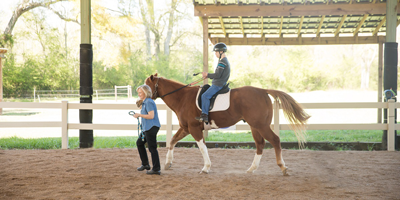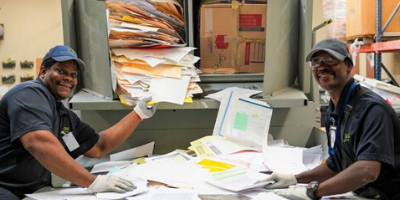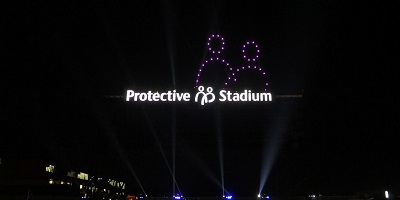If you follow the echo of giggles, you will find yourself looking at the rather large toilet in the former indoor pool building on the campus of Birmingham Southern College (BSC). It can flush an entire kid, sending him down a winding tunnel into the bottom of the emptied-out swimming pool. This toilet slide generates “gallons of giggles,” but it also illustrates for children wasteful water consumption.
The massive commode is part of the Interactive Museum inside the Southern Environmental Center (SEC), and it, along with the other displays of trash heaps and old fashioned bicycles in the museum, is designed to teach people of all ages how they can help protect and improve their local environments. At 5,600-square-feet, it’s the largest education facility of its kind in Alabama.
For Roald Hazeloff, the director of SEC, it was important that the center embody the spirit of the “Three Rs” – reduce, reuse and recycle. “What we did is repurposed a swimming pool that sat empty for many years on campus. No one knew what to do with it. So we found this vacant building and turned it into a three-story interactive museum,” he says.
Roald came to Birmingham Southern a quarter century ago to teach political science. When he realized the college didn’t offer any environmental courses, he took on the task with vigor, helping create the school’s Office of Sustainability. This gave rise to the Southern Environmental Center.
More than 20,000 visitors – 12,000 of whom are children in grades K-12 – parade through the museum each year, mostly for school field trips, Scout troops, gardening groups and other community organizations. They come from throughout Alabama, the country, and even the world.
Here, visitors are shown examples of how they can reduce waste output, reuse what can be reused, and then recycle what cannot, through interactive displays, like huge piles of trash that demonstrate how much more trash consumers generate now versus decades ago, and the always popular gigantic toilet. The rest of the facility is filled with interesting displays including artwork from local artists who have found creative uses for “trash.”
But The Interactive Museum is only part of the SEC’s efforts. The center has also established an EcoScape program that has expanded to 15 gardens in surrounding communities as well as BSC. These EcoScapes use local art to illustrate organic gardening practices, offer outdoor classrooms, and transform vacant lots in urban neighborhoods into catalysts for revitalization. Two EcoScapes also serve as therapy gardens at a local hospital.
The center also co-manages the Turkey Creek Nature Preserve, a 466-acre site in Pinson, Alabama, established through a partnership with Alabama’s Forever Wild Program and the Freshwater Land Trust. Some of the most biologically diverse habitats in North American can be found here, including three endangered species of fish – the Watercress, Rush and Vermillion daters, the latter of which can only be found in Turkey Creek. The center’s latest project is the Geodome Visual Arts Theatre in the long-abandoned planetarium on campus. The domed theater showcases a high-tech video presentation of Alabama’s natural wonders, as well as innovative recycling efforts such as a program that uses recycled car parts to make rebar that is used to reinforce bridges constructed in Birmingham.
Just like the planetarium when it opened 50 years ago, the Geodome is the first of its kind in Alabama, incorporating interactive 4K videos with GIS mapping and drone footage to show a bird’s eye view of the state’s ecology and local geography. These films are projected onto a giant floating screen with an IMAX-quality sound system within the 46-seat chamber.
The wonders that make up the Southern Environmental Center are, in part, made possible through the support of corporate sponsors, like Protective Life Corporation and fundraisers throughout the year, including the Darter Festival and EcoFest.
Roald’s goal with the center is to entertain and engage visitors to renew, reuse and recycle. And ultimately, he hopes he is helping to make his visitors better stewards of the environment.





 To exercise your privacy choices,
To exercise your privacy choices,